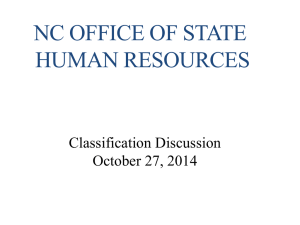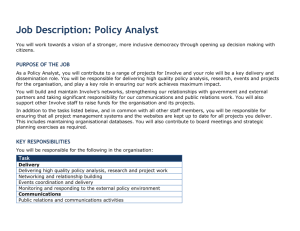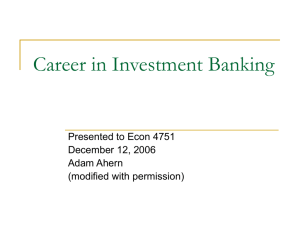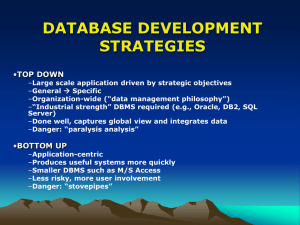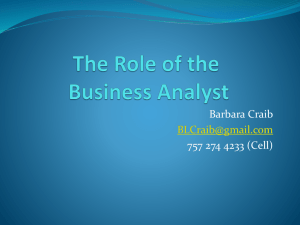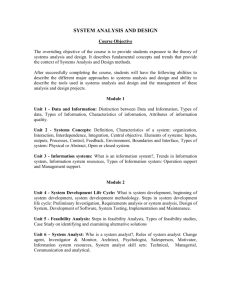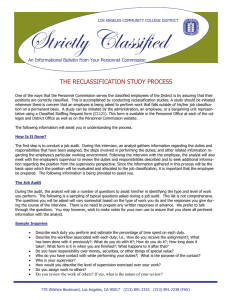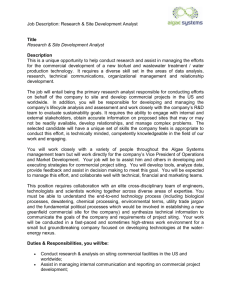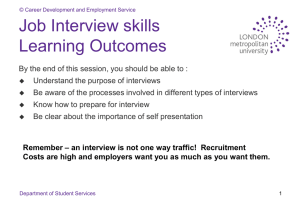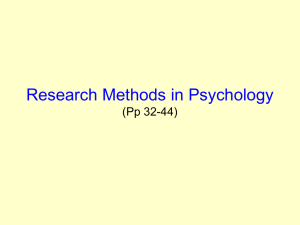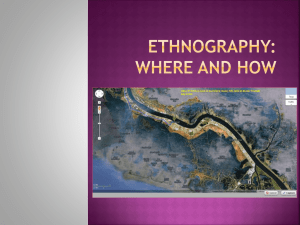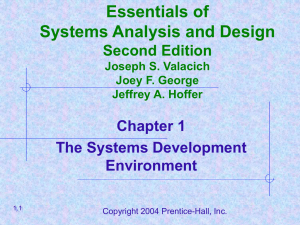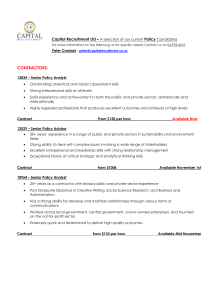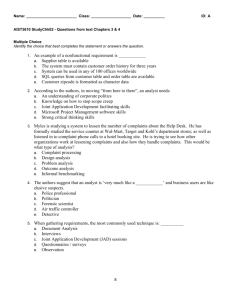Slides - Fundamentals of BPM
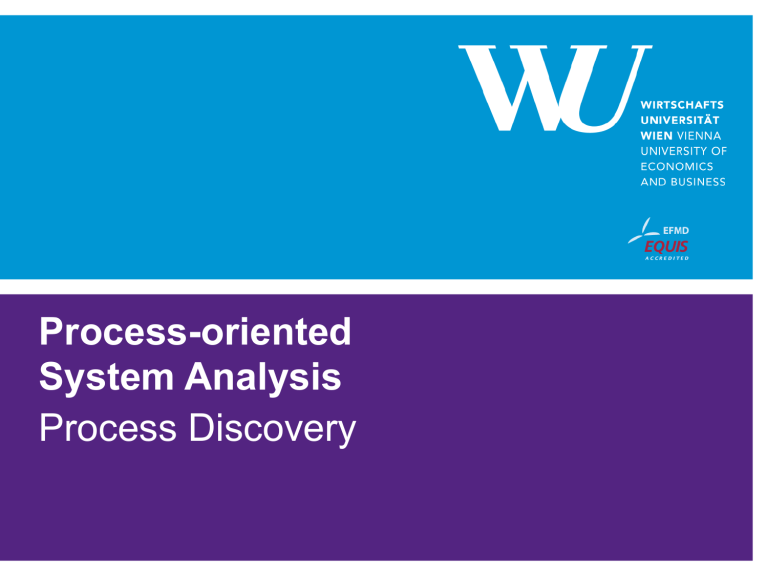
Process-oriented
System Analysis
Process Discovery
BPM Lifecycle
Process Discovery
1. Defining the setting: This phase is dedicated to assembling a team in a company that will be responsible for working on the process.
2. Gathering information: This phase is concerned with building an understanding of the process. Different discovery methods can be used to acquire information on a process.
3. Conducting the modeling task: This phase deals with organizing the creation of the process model. The modeling method gives guidance for mapping out the process in a systematic way.
4. Assuring process model quality: This phase aims to guarantee that the resulting process models meet different quality criteria.
This phase is important for establishing trust in the process model.
Who is involved?
4
Domain Expert Process Analyst
5
Stakeholders in Detail
Challenge 1:
Fragmented Process Knowledge
I make a photocopy before handing over the application
Why can‘t I directly provide cash after approval?
We bundle refinancing to get better interest rates.
Challenge 2:
Domain Experts think on Instance
Level
”Every trip is different.“
”You cannot really compare.
Our customers go to different places in different seasons using different modes of transportation.“
”We can never do anything exactly in the same way. There are so many special conditions.“
7
Challenge 3:
Knowledge about Process
Modelling is rare
”Could you please tell me, whether this diagram correctly shows your process?“
8
Expertise of Process Analysts
Problem understanding
Episodic knowledge available to get to root of problem
Knowledge organisation helps to structure problem
Problem solving
Trigger identification (problem-related cues)
Hypothesis management (formulation and testing of hypotheses)
Goal setting (what needs to be achieved next)
Top-down strategy driven by analysis goals
Modelling skills
Well-structured and laid out
Systematically labelled
Explicit start and end points of a process
Appropriate granularity and decomposition
9
Process Discovery Techniques
Evidence-based
Document analysis
Observation
Process mining
Interview-based
Workshop-based
10
Document Analysis
Documents point to existing roles, activities and business objects
Formal documentation in terms of
Organization chart
Employment plan
Quality certificate report
Internal policies
Glossaries and handbooks
Forms
Work instructions
11
Observation
Observe what people do at their workplace
Trace business objects in the course of their lifecycle
Inspect the work environment
12
Process Mining
13
Interviews
Interview
Validation Modeling
• Correct
• Complete
Verification
• Sound
Structured vs. unstructured interviews
Assumption: analyst and stakeholder share terminology
Then, questions target at identifying deviations from standard processing
14
Workshops
Gather all key stakeholders together
One process analyst, multiple domain experts
Participants interact to create shared understanding
Often: software-supported, a model is directly created during the workshop (separate role)
Model is reference point for discussions
Alternative: brown-paper workshops
15
Strengths and Weaknesses
Technique
Document Analysis
Observation
Automatic Discovery
Interview
Workshop
Strength
• Structured information
• Independent from availability of stakeholders
Weakness
• Outdated material
• Wrong level of abstraction
•
•
• Context-rich insight into process
Extensive set of cases
Objective data
• Potentially intrusive
• Stakeholders likely to behave differently
• Only few cases
• Potential issue with data quality
• Detailed inquiry into process
• Requires sparse time of process stakeholders
• Several iterations required before sign-off
• Direct resolution of conflicting views
• Synchronous availability of several stakeholders
16
Effort of Process Discovery
Consider that the order process of your favorite online book retailer has ten major activities that are conducted by different persons. How much time do you need approximately for creating a process model that is validated and approved by the process owner?
Make appropriate assumptions.
Process Discovery Effort
This process contains ten major activities that are executed by different persons. We can assume that there will be a kickoff meeting with the process owner and some important domain experts on day one. One day might be required to study available documentation. An interview with one domain expert can take from two to three hours, such that we would be able to meet two persons per day, and document the interview results at night time. Let us assume that we meet some persons only once while we seek feedback from important domain experts in two additional interviews. Then, there would be a final approval from the process owner. This adds up to one day for the kickoff, one for document study, five days for the first iteration interviews, and further five days if we assume that we meet five experts three times. Then, we need one day for preparing the meeting for final approval with the process owner, which would be on the following day. If there are no delays and scheduling problems, this yields 2
+ 5 + 5 + 2 = 14 work days as a minimum.
Any Difference in Discovery?
Consider the following two companies.
• Company A is young, founded three years ago, and has grown rapidly to a current toll of one hundred employees.
• Company B is owned by the state and operates in a domain with extensive health and security regulations.
How might these different characteristics influence a workshop-based discovery approach?
Discovery and Culture
Before starting with process discovery, it is important to understand the culture and the sentiment of an organization.
There are companies that preach and practice an open culture in which all employee are encouraged to utter their ideas and their criticism. Such organizations can benefit a lot from workshops as participants are likely to present their ideas freely. In strictly hierarchical organizations, it is necessary to take special care that every participant gets an equal share of parole in a workshop and that ideas and critique are not hold back. It might be the case that the young dynamic company has a more open culture than the company with extensive health and security regulations. This has to be taken into account when organizing a workshop.
Organizing the Gathered Material
1. Identify the process boundaries
2. Identify activities and events
3. Identify resources and their handovers
4. Identify the control flow
5. Identify additional elements.
Process Boundaries
• Under which condition does the process start?
• With which result does it end?
• Which perspective do you assume?
Identify Activities and Events
Identify Resources and Handovers
Identify Control Flow
Your modeling project
For your modeling project, capture
• Control flow
• Activities
• Gateways
• Conditions
• Events
• Resources
Describe the process in such a way that it can be used to trace in which state the admission/doctor-studies is and who is conducting which steps of processing.
Quality Assurance
Is this process model of good quality?
Deadlock
Syntactic Quality: Verification
Is this process model of good quality?
Deadlock
Labeling
Formulate Labels Adequately
• Activities as Verb-Object
• Events as Object-Passive-Participle
• Conditions with reference to Object
Semantic Quality: Validation
• Correctness and
• Completeness
Domain Expert Process Analyst
Pragmatic Quality: Layout
Models must look nice
Seven Process Modeling
Guidelines (7PMG)
G1 Use as few elements in the model as possible
G2 Minimize the routing paths per element
G3 Use one start and one end event
G4 Model as structured as possible
G5 Avoid OR routing elements
G6 Use verb-object activity labels
G7 Decompose a model with more than 50 elements
Explain which 7PMG guidelines point to potential for improvement. Remodel the process based on your observations.
The reworked process
Summary
• Domain expert and process analyst have different strengths and limitations in process discovery
• There are various discovery methods
• Quality Assurance is important



